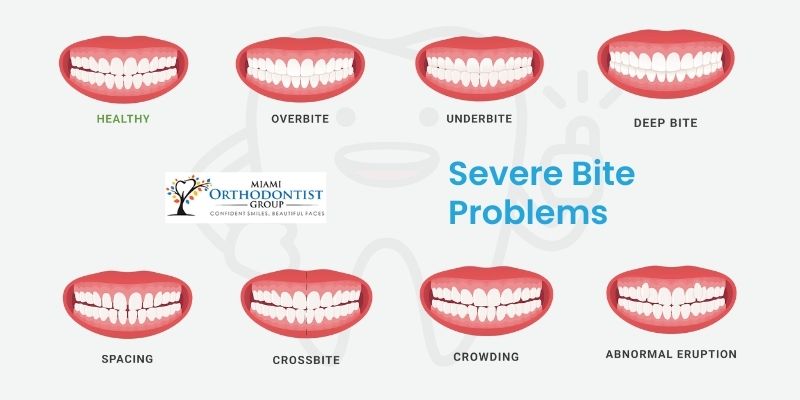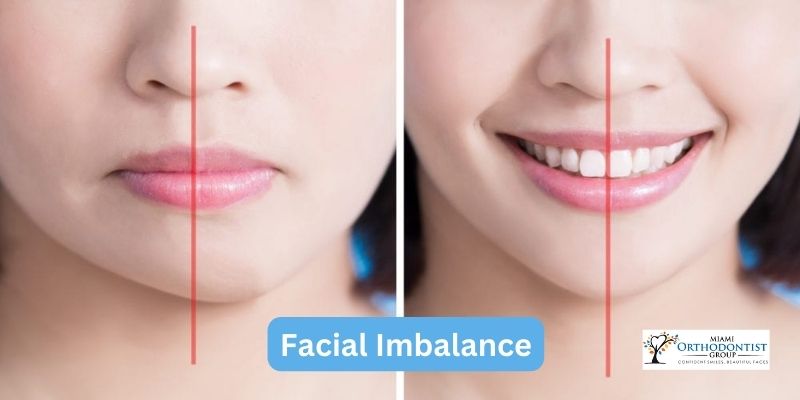Malocclusion, or jaw misalignment, can cause many problems, including trouble speaking, breathing, and chewing. Orthognathic surgery is a more extensive procedure typically necessary to repair severe misalignments, while mild cases may often be treated with orthodontic therapy alone. We’ll go over what orthognathic surgery is, who might benefit from it, how it works, and what to anticipate from the healing process in this guide.
Understanding Orthognathic Surgery
Orthognathic surgery is a corrective procedure performed by oral and maxillofacial surgeons to realign the jaws, addressing severe malocclusion that cannot be effectively treated with braces alone. It involves repositioning the upper jaw (maxilla), lower jaw (mandible), or both to improve alignment and functionality. This surgery is recommended for individuals with significant overbites, underbites, crossbites, breathing difficulties, TMJ disorders, or facial asymmetry.
Before recommending orthognathic surgery, a comprehensive evaluation is conducted, including X-rays, photographs, and dental impressions, to determine the extent of the misalignment and the most appropriate treatment plan. The procedure is typically performed under general anaesthesia and may involve cutting and repositioning the jawbones through LeFort osteotomy, bilateral sagittal split osteotomy (BSSO), or genioplasty.
Orthognathic surgery offers a comprehensive solution for severe jaw misalignment, providing patients with improved function, aesthetics, and quality of life. It is important to consult with qualified oral and maxillofacial surgeons to discuss individual needs and develop a personalised treatment plan.
Who Can Benefit from Orthognathic Surgery?
Orthognathic surgery may be recommended for individuals with:
Severe Bite Problems
 Orthognathic surgery is often recommended for individuals with significant overbites, underbites, or crossbites that impair chewing, speaking, or facial symmetry. If left untreated, these conditions can lead to discomfort, difficulty eating, and aesthetic concerns. Orthodontic treatment alone may not suffice for correcting severe bite problems, making orthognathic surgery a crucial option to achieve proper alignment of the jaws and improve both function and appearance.
Orthognathic surgery is often recommended for individuals with significant overbites, underbites, or crossbites that impair chewing, speaking, or facial symmetry. If left untreated, these conditions can lead to discomfort, difficulty eating, and aesthetic concerns. Orthodontic treatment alone may not suffice for correcting severe bite problems, making orthognathic surgery a crucial option to achieve proper alignment of the jaws and improve both function and appearance.
Difficulty Breathing
Some cases of jaw misalignment can obstruct the airway, leading to breathing problems, particularly during sleep. Orthognathic surgery is often recommended to address these issues by repositioning the upper and lower jaws to improve airflow and alleviate breathing difficulties. By correcting the underlying structural abnormalities, patients can experience relief from symptoms such as snoring, sleep apnea, and daytime fatigue, ultimately improving their overall respiratory function and quality of life.
Temporomandibular Joint (TMJ) Disorders
Misaligned jaws can contribute to Temporomandibular Joint (TMJ) disorders, causing pain and dysfunction in the jaw joint. Orthognathic surgery is often recommended to realign the jaws, alleviate pressure on the TMJ, and improve its function. By addressing the underlying cause of TMJ disorders, such as malocclusion or jaw asymmetry, orthognathic surgery can provide long-term relief from symptoms such as jaw pain, clicking or popping sounds, and difficulty opening or closing the mouth.
Facial Imbalance

Orthognathic surgery is viable for individuals experiencing facial asymmetry due to jaw misalignment. This procedure can enhance facial harmony and balance by repositioning the upper and lower jaws. Facial asymmetry can result from various factors, including developmental abnormalities, trauma, or congenital conditions. Orthognathic surgery addresses these underlying issues, improving the face’s aesthetic appearance and functionality. Patients undergoing this procedure can expect a more symmetrical facial structure and improvements in chewing, speaking, and overall self-confidence, ultimately leading to a better quality of life.
Before recommending orthognathic surgery, your orthodontist and oral surgeon will conduct a comprehensive evaluation, which may include X-rays, photographs, and dental impressions, to determine the extent of the misalignment and the most appropriate treatment plan.
The Orthognathic Surgery Procedure
Orthognathic surgery is typically performed under general anaesthesia and may involve one or more of the following procedures:
- LeFort Osteotomy: This procedure involves cutting the upper jawbone and repositioning it to correct issues such as an open bite or a gummy smile.
- Bilateral Sagittal Split Osteotomy (BSSO): Used to correct lower jaw misalignment, this involves cutting the mandible on both sides and moving it forward or backwards to improve the bite.
- Genioplasty: In some cases, a chin augmentation or reduction procedure may be performed to enhance facial balance and harmony.
The surgical approach will depend on the individual’s unique jaw structure and the desired outcome. The surgery typically takes several hours, and patients may need to stay overnight in the hospital for monitoring.
Recovery and Postoperative Care
Recovery from orthognathic surgery varies from person to person but generally follows a similar timeline:
- Immediate Postoperative Period: Patients will experience swelling, bruising, and some discomfort in the days following surgery. Pain medication and cold compresses can help manage these symptoms.
- Diet Modifications: A soft or liquid diet is usually recommended for the first few weeks to allow the jaws to heal properly. Patients should avoid hard, crunchy, or sticky foods that could disrupt the healing process.
- Activity Restrictions: Strenuous activities should be avoided for several weeks to prevent complications and promote healing. Patients may also need to refrain from driving or operating heavy machinery while taking pain medications.
- Orthodontic Adjustments: Following surgery, patients will continue orthodontic treatment to fine-tune the bite and ensure optimal teeth alignment.
- Long-Term Follow-Up: Regular follow-up appointments with the oral surgeon and orthodontist are essential to monitor progress and address any issues that may arise during recovery.
Patients need to follow their surgeon’s postoperative instructions closely to minimise complications and achieve the best possible results.
Potential Risks and Complications
As with any surgical procedure, orthognathic surgery carries some risks, including:
- Infection: There is a risk of infection at the surgical site, which may require antibiotics to treat.
- Nerve Damage: Damage to nerves in the jaw area can lead to temporary or permanent numbness or tingling.
- Relapse: In some cases, the jaw position may gradually relapse over time, requiring additional treatment.
- Anaesthesia Risks: General anaesthesia carries its risks, including allergic reactions and respiratory problems.
However, the likelihood of complications can be minimised with careful planning and a skilled surgical team.
Conclusion
Orthognathic surgery is a highly effective treatment option for correcting severe jaw misalignment and improving both function and aesthetics. While the decision to undergo surgery is not to be taken lightly, many patients experience significant improvements in their quality of life following the procedure. If you believe you may benefit from orthognathic surgery, consult with a qualified oral and maxillofacial surgeon to discuss your options and develop a personalised treatment plan. You can achieve a healthier, more harmonious smile with proper care and attention.


